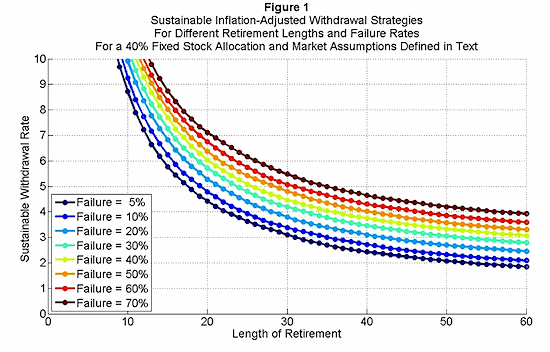
Retirement Lengths, Withdrawal Rates and Failure Probabilities
In two useful charts, our guest columnist shows how various factors--along with market performance assumptions--interact to inform our decisions about how much we can afford to spend in retirement.


